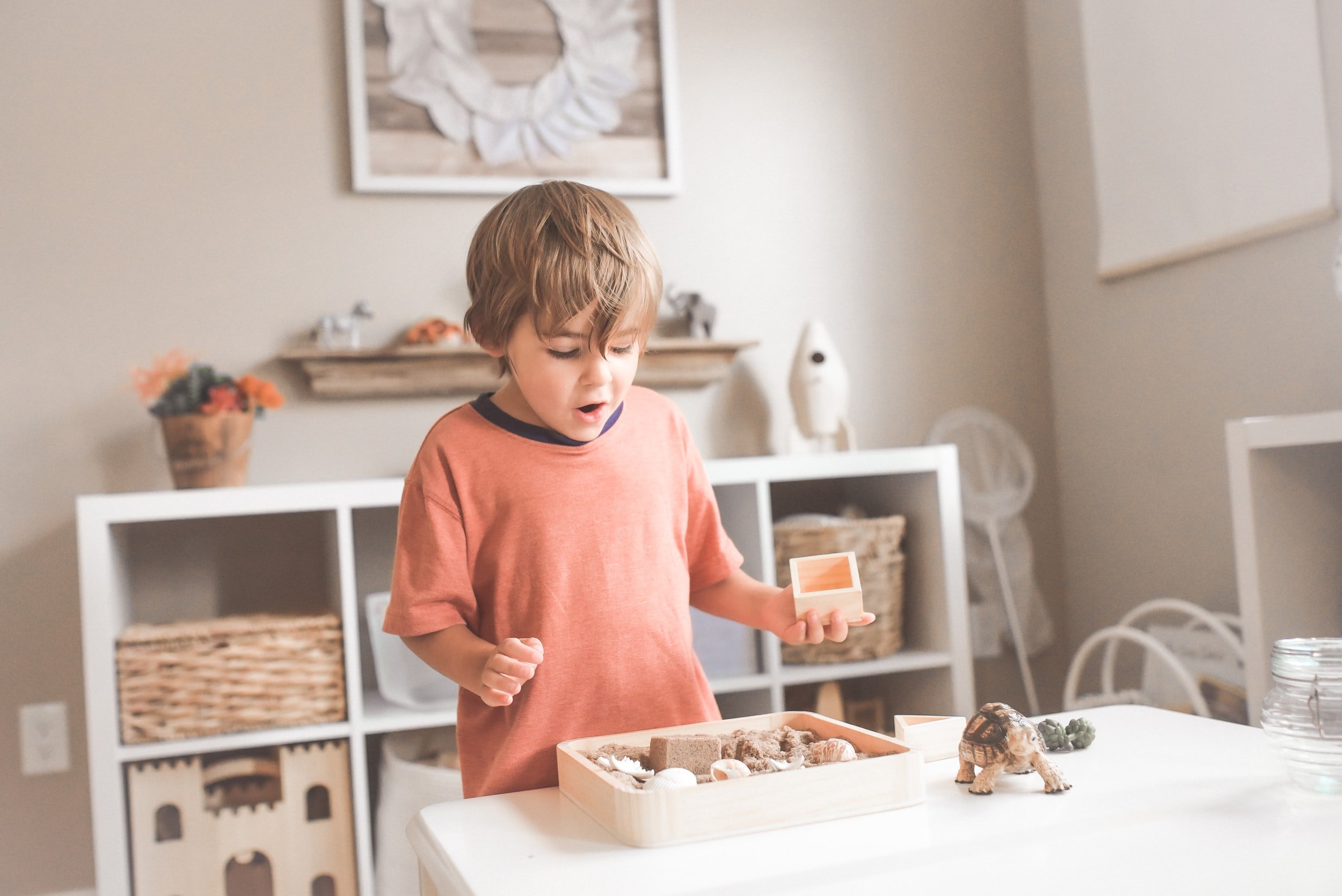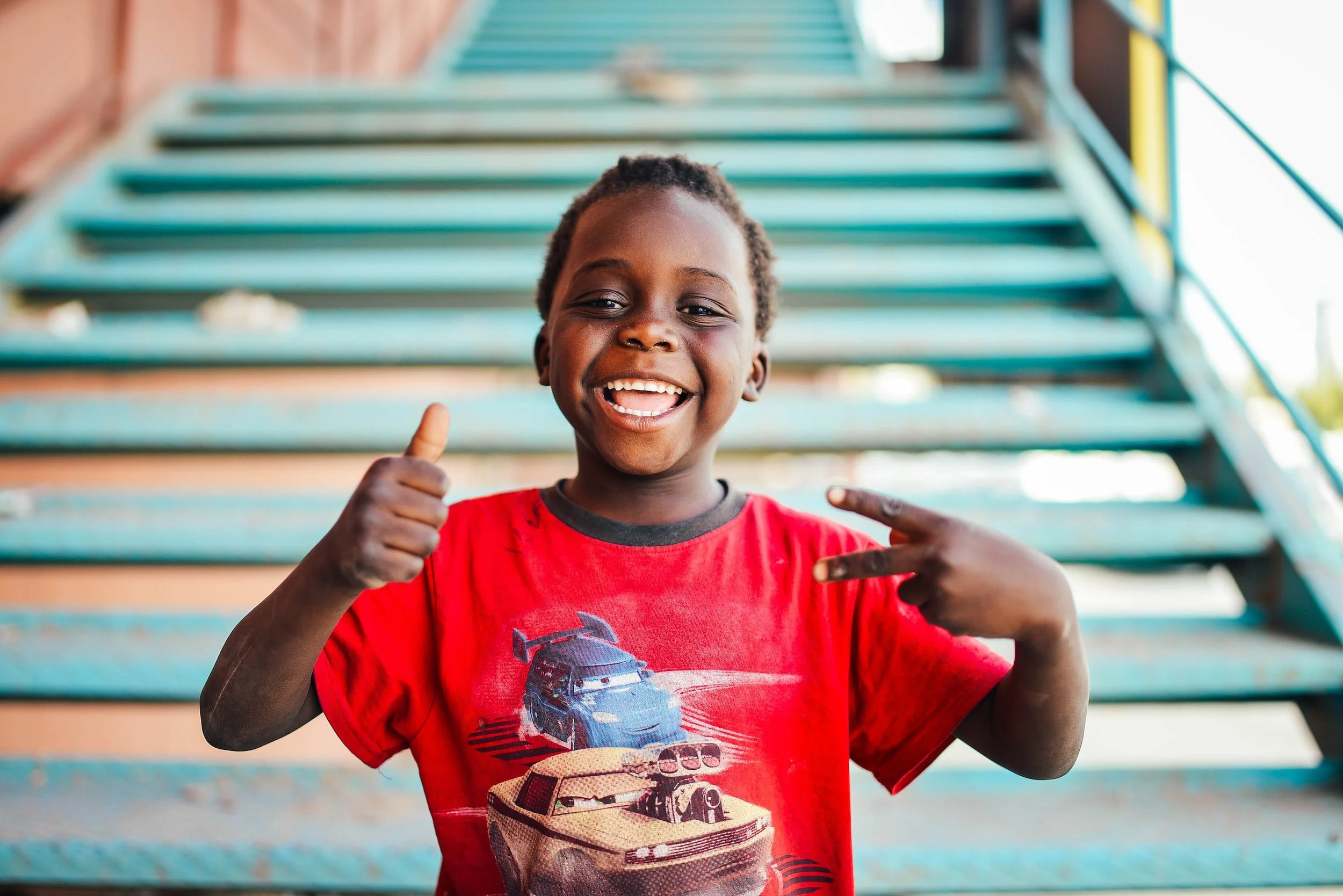“Play Therapy” is a catchall term to describe many different types of counseling that help children explore feelings using games, toys, and make-believe.
Considering therapy for your child but not sure where to start? This post is for you. Kids today have more options for therapy than ever before, which is definitely a good thing. However, it can also be an overwhelming thing when you turn to Google looking for a therapist only to discover a sea of jargon and acronyms. With so many types of therapy available, it can be tough to determine what’s right for your kid.
I love that families have so many different styles to choose from. No matter what your child’s concern is, there’s probably a therapy out there that’s been researched and proven to help. You can find therapists who teach practical, concrete coping skills, if that’s your thing. There are also therapists trained in forms of therapy that don’t require much language, for children who feel better expressing themselves in other ways.
There’s no one right way to do therapy, so this won’t be a ranked list. Instead, I’ll be doing a quick breakdown of 5 common types of child therapy you might encounter during your search. Even though there’s no such thing as “best’, hopefully you’ll come away with some ideas about what might be best for your child. All these types of therapy are valid, and they can all help kids and families change their lives.
Play Therapy: Exploring Feelings Without Words
Play therapy builds on a child’s natural tendency to learn about the world through play, so they can work through big feelings and difficult life changes without having to sit and talk for hours on end. Sitting on a couch across the room from a strange adult isn’t always the most natural thing for little kids. Play therapy is a wonderful way for younger children to feel safe and comfortable in the therapy room.
Play therapists like to say that “play is a child’s language, and toys are a child’s words.” With this in mind, you’ll see a wide variety of toys in a play therapists office that aim to give children a broad vocabulary to choose from. Expect to find nurturing toys, like dolls, aggressive toys, like punching bags, and creative toys, like art supplies. What you probably won’t find a lot of is electronic stuff: most play therapy toys are open-ended to encourage kids to play in avariety of ways.
So how is play in a therapy office different than play at home? Play therapists are trained to notice underlying themes that repeat themselves in a child’s play, and may give insight into how they’re thinking and feeling.
Within the umbrella of play therapy, you’ll find a variety of differen approaches. Some play therapists are child-centered, meaining they are trained to follow a child’s lead and let them set the pace for therapy. Others may incorporate education about feelings or coping strategies into play to help children learn new skills.
Cognitive Behavioral Therapy: Tools for the Here and Now
CBT differs from some other forms of therapy because it teaches children tools, like mindfulness, that they can use in the present—and continue to practice in the future.
Cognitive Behavioral Therapy, or CBT, is a form of counseling that focuses on helping people learn how to cope with strong emotions by changing their behavior or becoming more aware of their thinking patterns. It’s less focused on uncovering the past or figuring out why a problem evolved the way it did (although you might do some of this in CBT). Instead, the emphasis is on figuring out how to handle the problem now that it’s here, in the present.
One strength of CBT is that it’s an evidence-based treatment, meaning that there’s a lot of research to back it up and prove that it’s effective. Variations of CBT have been designed for pretty much every mental health concern. Exposure and Response Prevention is a specialized form of CBT for children and adults with obsessive compulsive disorder. TF-CBT, which you’ll read about below, is used for kids and teenagers who’ve survived a trauma. You’ll also see CBT used often with children dealing with anxiety, depression, or angry outbursts.
CBT gives children education to help them better understand their feelings and how they work. This can reduce fear and shame, and empower children to feel more in control of their emotions. They’ll also learn coping skills they can use during difficult moments to deal with their emotions in healthier ways. CBT skills require kids to be able to think abstractly—thinking about your own thinking is a complex skill! For this reason, it’s sometimes a better fit for older children.
TF-CBT and Trauma Therapy: Resilience and Storytelling
Children often need extra, more specialized support in order to recover from the after-effects of trauma. Highly stressful or dangerous experiences like accidents, illnesses, a death in the family, or exposure to abuse or violence can lead to long-lasting symptoms that don’t resolve on their own. You may notice a child having difficulty sleeping, experiencing big emotional outbursts, or regressing: going back to habits from earlier in childhood, such as thumb-sucking or bedwetting.
Children need to be able to share their feelings about what has happened to them in order to heal. However, traumatic memories can be very overwhelming. Trauma therapists understand how to help children gradually work through these memories in a safe way, so they don’t feel as confusing or hard to manage. This can happen through play, art, storytelling, or just by talking to a counselor.
Trauma therapy can also give kids and parents tools to deal with symptoms of PTSD, which can affect the whole family. One common form of trauma therapy for kids is Trauma-Focused Cognitive Behavioral Therapy, or TF-CBT. This is a step-by-step approach that teaches children skills that build on each other, eventually helping a child to feel comfortable sharing their story with a parent or other supportive adult.
Parent-Child Interaction Therapy: Behavior Help for Kids and Parents
This is a special form of therapy designed for toddlers, preschoolers, and young children who are struggling with big behaviors and meltdowns. All little children tantrum, but sometimes these acting-out behaviors get so intense and difficult to manage that it puts a strain on the relationship between parent and child. This creates a vicious cycle of bad behavior, frustration, and disconnection.
Sometimes these behavior struggles are a response to trauma or stress, and other times it may just be due to temperament and sensitivity. Regardless of the reason, therapies like PCIT can help parents and children break the cycle of “bad” behavior, set appropriate limits, and enjoy more time spent together.
You can expect to spend a lot of time in the office with your child if you’re participating in PCIT. You’ll learn skills from your therapist to practice at home, and also get opportunities to use them in real time, with your therapist there to coach you through the process. The first part of PCIT is all about strengthening your relationship with your child through play and positive attention. The second is a set of discipline tools you can use to shape behavior without accidentally fueling the fire.
Expressive Arts Therapies: Use Mind and Body Together
Art materials give children a sensory experience that can help them stay grounded as they explore feelings in counseling.
Many kids (and adults) already know that the arts provide a mood boost. Mediums like dance, visual art, theater, and music can also be integrated into therapy to help children work through feelings and heal from trauma. We call this whole group of methods the expressive arts therapies, since they focus on creative expression.
Like play therapy, using art gives children a way to let out feelings they may not have words for, either because the feeling is too big or because they don’t yet have the vocabulary to do so. Music, dance, art, and drama are multi-sensory experiences, so they help kids engage their bodies and brains at the same time. This can be soothing, help children stay engaged, and even make it easier to process trauma.
Therapists can become specialists in any of the expressive arts, and use them as a way to connect with children in sessions. Your child doesn’t need to have any prior experience in a particular art form in order to do well in expressive arts therapy. All kids are creative thinkers, and therapy is focused on the process of artmaking rather than a finished product.
What’s the Next Step? Choosing the Right Type of Therapy for Your Child
Ultimately, the type of therapy you choose is going to be based on your family’s needs, and your child’s specific situation. As you’re weighing your options, you may want to ask yourself some questions, such as:
Is my child still very interested in make-believe play?
Are we the kind of family that does well with structure and direct advice?
Does my child prefer to learn by doing or by talking?
How is my child feeling about starting therapy? Are they self-motivated or a little unsure?
Is there a specific event, like a trauma, that’s bringing us in to therapy?
Is there a therapy option that’s tailored to my child’s specific concern?
To what extent should I expect to be involved in this type of therapy, as a parent?
You may also want to check out my blog post on the differences between a therapist, psychologist, and psychiatrist to help you navigate those choices. Once you’ve got a list of potential helpers, this list of questions to ask your child’s therapist can help you interview them to find the right fit.
Options for Child Therapy in Davidson, North Carolina
Kids in North Carolina, New York, and Florida can participate in several forms of therapy in person or online through my Davidson, NC office.
If you’re located in the Lake Norman area of North Carolina, like I am, you may be interested in one of the different types of therapy I offer to kids in our region. At my child therapy office in Davidson, I help anxious kids and tweens through:
…and one special form of expressive arts, Dungeons & Dragons Therapy
I also provide online therapy to children throughout the states of North Carolina, New York, and Florida. And if you’re further afield than that, you can check out my coping skills course, which covers my favorite strategies to help tweens with anxiety. It’s available on demand, wherever you live.




